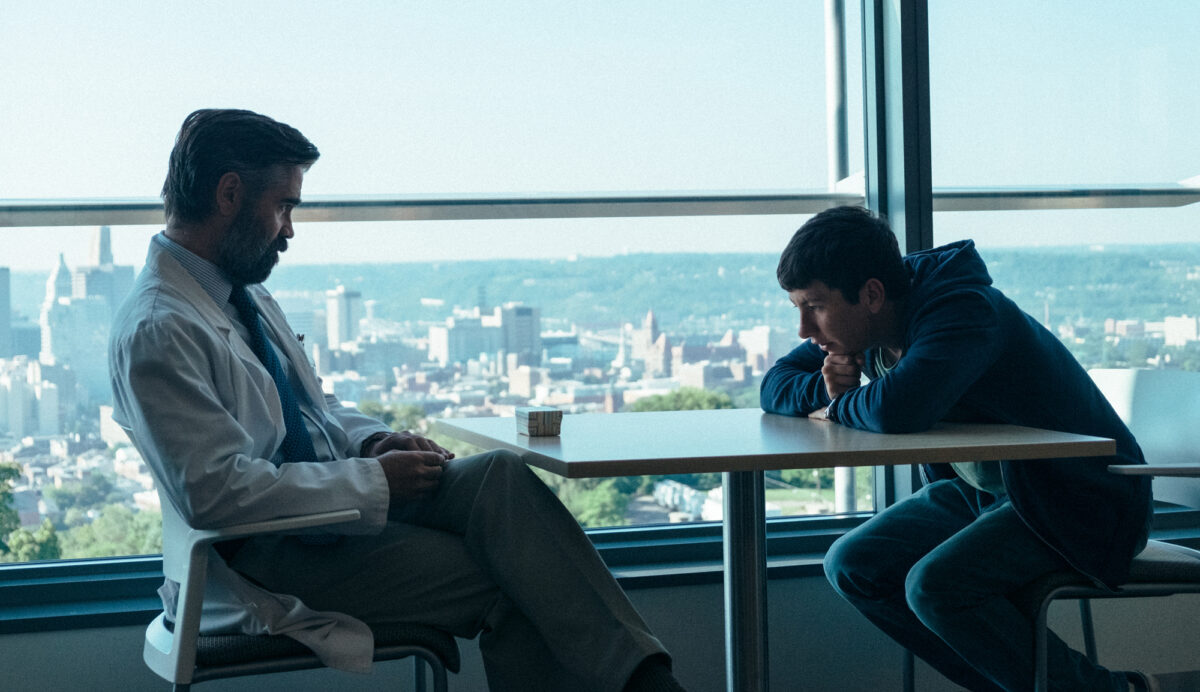Yorgos Lanthimos’ The Killing of a Sacred Deer is a slow-burning psychological horror that blends surreal dialogue, clinical visuals, and an impossible moral choice into one of the most disturbing modern tragedies. Its ending leaves audiences unsettled, not just because of what happens, but because of what it says about guilt, justice, and the darkness of human nature.
The Premise: A Debt to Be Paid
Cardiac surgeon Steven Murphy (Colin Farrell) befriends a teenage boy named Martin (Barry Keoghan) after the death of Martin’s father during a surgery Steven performed. At first, their interactions seem odd but benign until Martin reveals his belief that Steven’s mistake caused his father’s death, and now Steven must make a choice: kill one member of his own family to balance the scales, or watch as all of them die, one by one, from a mysterious and unstoppable illness.
The Moral Dilemma
Steven is faced with an ancient, almost mythic form of justice. No law or medical science can save his family. Martin’s “curse” is never explained in a literal sense as it operates like the rules of a fable or Greek tragedy. Steven tries to delay, reason, and find loopholes, but the illness afflicting his wife and children progresses exactly as Martin said it would.
Greek Tragedy Parallels
The film’s title and structure directly reference the myth of Agamemnon from Euripides’ Iphigenia in Aulis. In the myth, Agamemnon must sacrifice his daughter to appease the goddess Artemis after offending her, allowing the Greek fleet to sail to Troy. In The Killing of a Sacred Deer, Steven is cast in the role of Agamemnon, Martin embodies divine vengeance, and the family’s home becomes the setting for a ritualized reckoning.
Symbolism and Martin’s Revenge
Martin’s actions can be read as supernatural justice or as a metaphor for inescapable guilt. Whether or not he has mystical powers is less important than the inevitability of Steven’s punishment. Martin’s calm, deliberate manner makes him feel less like a typical villain and more like an agent of fate. He believes he is restoring balance, and the clinical detachment of the characters’ dialogue underscores the cold, ritualistic nature of his revenge.
Steven’s Impossible Choice
Ultimately, Steven blindfolds himself, spins with a rifle in hand, and fires randomly until one family member is killed i.e. his son Bob. This grotesque method of choosing spares him the agony of deciding outright, but also strips the moment of any sense of mercy or fairness. It’s as if Steven is surrendering entirely to fate, abdicating his moral agency in the process.
The Role of Guilt
Steven’s guilt is the silent engine of the story. Whether Martin’s father’s death was truly his fault is left ambiguous, but guilt transforms into a kind of curse all its own. Lanthimos never lets the audience know if the punishment is “deserved,” leaving us in the uneasy space between justice and cruelty.
The Cinematography and Dialogue
Lanthimos heightens the tension through a mix of cold, symmetrical shots and unnaturally flat dialogue delivery. The camera glides slowly through sterile hallways and rooms, evoking the feeling of a ritual or surgical procedure. Conversations are stripped of natural inflection, making even the most mundane exchanges feel ominous. This style creates a sense of detachment that mirrors the film’s themes morality dissected with surgical precision.
The Final Scene: Closure or Continuing Curse?
In the final moments, Steven and his wife sit in a diner with their surviving daughter, Kim. Martin enters, stares at them in silence, and leaves. The family says nothing. They finish their meal in a quiet, unnatural calm.
This ending can be read in several ways. It may signal that the debt is paid and the curse lifted, though the family’s body language suggests their lives are permanently fractured. Martin’s silent presence could be a reminder that fate can strike again, or that guilt once embedded never truly leaves.
The Killing of a Sacred Deer doesn’t offer catharsis. Instead, it traps the audience in the same moral vacuum that swallows its characters, asking us to consider how we might act when forced to choose between the unthinkable and the inevitable.
